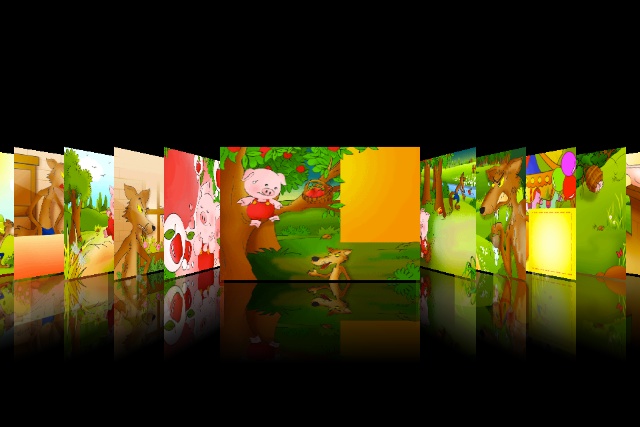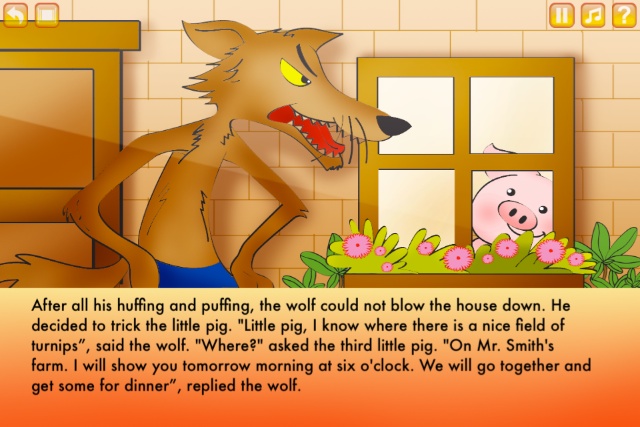Updates to some Useful Apps: Pinball HD, The New Yorker, Skype et al (amended)

AMITIAE - Friday 16 December 2011
|
Updates to some Useful Apps: Pinball HD, The New Yorker, Skype et al (amended) |
 |
|
|
Most mornings I check to see whether any apps have been updated and are available for download. There are several this morning that I find rather interesting: Pinball HD, New Yorker, Skype, TransFire XP and the Dictionary.com Dictionary and Thesaurus.
Pinball HDAs I am still picking up the pieces from the folding of AMITIAE it will be useful to include my original comments on this app. I am not a player of games these days, but this was one that I found compulsive when I first bought this (19 Jan 2011). Pinball HD was downlaoded fairly quickly; and while the Mac version is $2.99, the iPad download is $0.99: small beer indeed, but this makes it a no-brainer.
Tapping the screen, stops the display movement (and the music). Controls are then visible to left and right. Those on the left are selectors for the current and three other games installed: Wild West, The Deep, Jungle Style and Slayer. This last only offers a 30 second trial period and there is a buy button if we want this. The controls on the right are: News which links to online information and showed three more tables available for $0.99 each; Scores, which is a two part screen with a World list at the bottom and a local list (empty) to the top; Guide revealing an image of the current table with text boxes explaining the parts; Multiplayer with settings for this feature; and Settings. I played each of the games briefly and, like their metal, electronic and wood counterparts each has a different character. As with a pinball game, the spring plunger is pulled back and the distance we do this changes the initial play velocity of the ball and its trajectory. In early play I was confused when, instead of the display being still, it moved about to focus on specific locations of the ball or of actions in the game. A real player has a complete view of a game while it is being played and is in full control. With these tables, at times the flippers were out of my view and it was difficult to adjust my play as they came back into sight with the ball bearing down on them. When I turned the iPad display to landscape mode, I had a full view of the table with none of the focussing or homing in on locations as there is in portrait mode, but of course the game table is much smaller.
The update this week makes available a new game -- Da Vinci -- as an in-app purchase and we are told there are also the inevitable minor bug fixes.
The New Yorker Magazine I have written about this venture into tablet publishing so many times as I think the New Yorker has done one of the best jobs of making the transition from print to the new format and I cited it this week when reviewing the new Motor Sport app: another which scores highly on the content that it provides the reader: this is a fact that cannot be ignored. The app now appears on one of the shelves of Apple's Newsstand feature on the iPad.
I have written about this venture into tablet publishing so many times as I think the New Yorker has done one of the best jobs of making the transition from print to the new format and I cited it this week when reviewing the new Motor Sport app: another which scores highly on the content that it provides the reader: this is a fact that cannot be ignored. The app now appears on one of the shelves of Apple's Newsstand feature on the iPad.
I only wish I had more time to read the excellent output of the New Yorker which I first wrote about on 16 June 2011, commenting on the Digital Revolution issue:
I could sit in the dark: in itself not a problem and it can be relaxing. I might watch the television, but I had already checked the evening lists and even the oldies channel was a disappointment. I thought about the iPad. Then I thought some more. If I turned it on, the glow from inside would mean enough visibility to read with.
I think I had looked through my first New Yorker in the late 1950s although at that time was only interested in the cartoons, some of which I could understand then. The silhouette or even the image (once a year) of Eustace Tilley was something to look out for in doctors' waiting rooms, in the library, or on the news-stands, although it was not until much later (1980s when in the US) that I subscribed for a year. In the interim, I have occasionally bought copies at airports and when in hospital 5 years ago someone bought me several copies. These were an intellectual lifeline and when I left the hospital, the Thai doctor asked me if he might have one, or maybe two. He found they were good for his English (which was already excellent) and liked the good writing in the pages.
[By the wonders of the Internet and Google, I find now that the article appears to have been issued as a book: Rising from the Plains, by John McPhee.] The start of semester and the day to day activities that intervene meant that I had not downloaded any of the editions I had purchased, apart from that one published just after the infamous raid in Abbottabad. From online activity, I note that the semi-erased face, which I took as a simple yet wry comment on fact, had generated much comment. I looked at the thumbnails of the covers and began to download. The most recent shown was the issue for 7 and 13 June, but alongside it was an atypical yellow cover: The Digital Revolution collection. How could I resist? With the tea poured I began to flick through the electronic pages. The text is clear and contrasts well against the white background. I started with Ken Auletta's review of the last few years, with clever perspectives of early users, his introduction to @ rather than At, although for security reasons we sometimes write At when we mean @ these days. And he also looks at some recent phenomena like Facebook and how current uses may look back and regret current postings. Runner Up is the second item, reached by a swift right swipe (even the vocabulary of reading has changed). Laurent Ciluffo's article on an IBM chess playing computer read so well that I could have been looking at information about the genesis of Watson, until I reached the punch cards. This item from 1958 has worn well. So too do all of the articles, carefully selected perhaps to reflect today rather than the time they were initially created. An investigation on a lost email has all the hallmarks of some of the best of the New Yorker, like my geologist's examination above, but in 1999 when Guy Billout lost one message, his quest to find out why leads us into the bowels of the AT&T Schaumberg complex (which is still there) and introduces us to many of the technical experts around then, plus a customer service representative who could have come from any company today.
And just before this look at Zuck, we go back with Laurent Cilluffo to 2008 and try to discover what caused the suicide of Megan Meier who suffered the hoax of Josh Evans -- a creation of her neighbours -- on her MySpace pages. This is as relevant today as it was then. For all the seriousness, the New Yorker has some excellent cartoons. While I dare not include them for copyright reasons, they are strong enough that the words would perhaps even work on the medium of radio: "Can you hang on a sec? I think I just took another picture of my ear." For a couple of years many of these have also been available in animated versions via a podcast. There is of course, now also an app for it. Included in the Digital Revolution issue is one of the most famous of all which has a simple truth to it and may even link to the tragedies of Megan and others: "On the internet, nobody knows you're a dog."
Skype While telephone bills can be rather expensive, especially if one phones overseas, the use of the internet to make such connections was made almost universal by the advent of Skype, now owned by Microsoft who purchased it a few months ago from eBay. I tend to use the desktop version for the Mac and my most frequent use is to stay in touch with my mother in the UK. A 30-minute session, "chewing the fat" is more economic this way.
While telephone bills can be rather expensive, especially if one phones overseas, the use of the internet to make such connections was made almost universal by the advent of Skype, now owned by Microsoft who purchased it a few months ago from eBay. I tend to use the desktop version for the Mac and my most frequent use is to stay in touch with my mother in the UK. A 30-minute session, "chewing the fat" is more economic this way.
The iOS version (iPhone, iPod touch and iPad) has been available for a while and has now been updated to version 3.6. We are told that:
TransFire XPTransFire is billed as an instant messaging app, although I find its major use is as a means to translate between English and Thai when I am using the iPhone. Several changes are reported for Transfire XP version 2.3:
We are also told that there are several new features coming soon.
Dictionary.com - Dictionary & ThesaurusI find that this is a fairly useful way to access a dictionary on my iPhone. The reaction to typing in a word is quite swift and I do not have to wait for a connection. As the word is typed in a list of possibles is made available and we may select from the best choice. There is a sound feature for listening to the pronunciation (useful for non-native speakers) as well as an Export icon (email, Facebook, Twitter). There is also a word of the day which appears just after midnight.The update to version 3.3 of Dictionary.com - Dictionary & Thesaurus has a single fix reported: the bug that removed punctuation has been fixed.
Then Three Little Pigs Storybook HDThe update to this app appeared a couple of hours after I uploaded the original article, so I am amending the information to include the update. This will also allow me to make another AMITIAE review available. I originally looked at this app for children on 20 November 2011.
For years mothers have been relating stories like Goldilocks and the Three Bears or The Three Little Pigs, among others, as bedtime stories, or as early texts to help young learners with reading. The repetition of the text of a story which is known already to a child makes the first steps in learning to read easier, by building on the familiarity. A recent arrival of an app for the iPhone or iPad, using the story of the Three Little Pigs, allows a new way to experience this tale; and there is an interesting angle with Chinese used well.
Technology puts a new twist on the display of text and with the iPad particularly, multimedia displays of magazines or books mean that we can integrate sound, vision and other features to complement a text.

With both the automatic and manual options, touching any word gives the user sound output, using another (male) voice. As this does not stop the female voice, there may be some confusion if both are heard. With the manual settings, I found that even on the small screen of the iPhone, I was able to touch most words separately, but it took some care. With the small size of the text, I sometimes also touched the lines above or below, or the words either side of the one I was aiming at. Smaller fingers might be able to do this more successfully. Each page is nicely illustrated in a cartoon style that children would not find intimidating, even when the wolf has a (semi-) fierce look on his face. The text is loaded from a separate source. At the top of the screen are navigation controls. Top left has an arrow that takes users back to the first (title) page where touching each of the pigs produces a different grunt sound. Touching parts of the picture on other pages also produces sounds. A menu to the right of the page controls the way the app may be used with Read for me and read Myself at the top of the list. Below these items are a link to Instructions which overlays a tidy display of the app's controls. Also on the main page is a selector for Automatic or Manual page turning. When on Manual the pages turn like those in the iBook app, and there is also a sound.

I found the text to be easy to deal with, although there were one or two words that youngsters might find hard. The app text retained the flavour of the original story with, ". . . by the hair of my chinny-chin-chin" and of course, "I'll huff and I'll puff and I'll blow your house down".


|
|

For further information, e-mail to

|

|